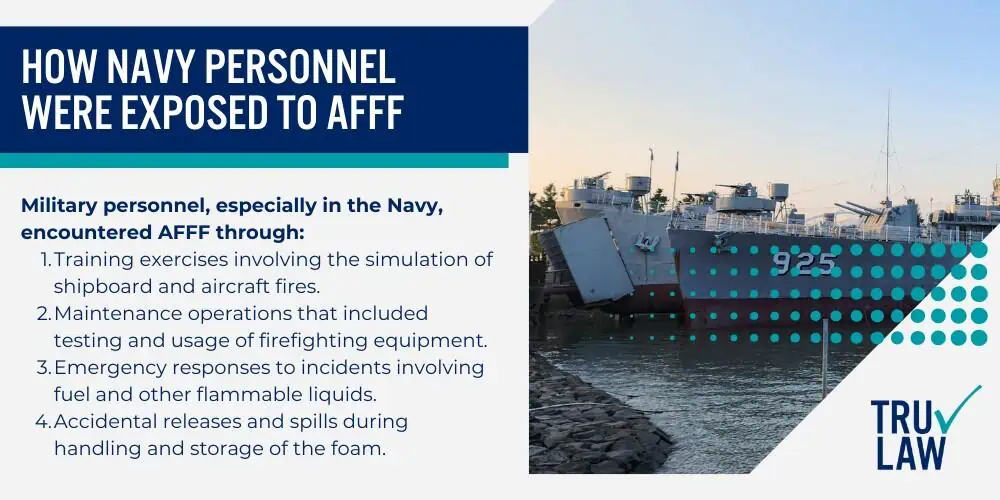Exposure to Aqueous Film Forming Foam (AFFF) can lead to serious health concerns for individuals, particularly military personnel who have used the foam in circumstances that require extinguishing flammable liquid fires.

Recognizing symptoms of AFFF exposure is crucial for managing potential health hazards.
What Are AFFF Chemicals?
AFFF, or Aqueous Film Forming Foam, comprises harmful substances that create a film to extinguish flammable liquid fires quickly.
These substances include:
- Perfluoroalkyl and polyfluoroalkyl substances (PFAS), which are a group of toxic chemicals known for their resistance to heat, water, and oil.
- Persistent compounds that do not break down easily in the environment or the human body lead to significant health risks.
- Chemical agents that are effective in fire suppression but have been recognized as potential health hazards because of their persistence and bioaccumulation tendency.
- Surfactants and solvents that enhance the foam’s spreading and penetrating capabilities during firefighting operations.
How Navy Personnel Were Exposed to AFFF
AFFF, a firefighting foam widely used by the Navy, was employed in various training and operational scenarios, leading to direct exposure among personnel.
Navy staff contacted AFFF during fire drills, equipment testing, and emergencies, increasing their risk of harmful chemical exposure.

Military personnel, especially in the Navy, encountered AFFF through:
- Training exercises involving the simulation of shipboard and aircraft fires.
- Maintenance operations that included testing and usage of firefighting equipment.
- Emergency responses to incidents involving fuel and other flammable liquids.
- Accidental releases and spills during handling and storage of the foam.
Importance of Recognizing AFFF Exposure Symptoms
Veterans and workers may suffer from serious health issues due to exposure to AFFF.
Early recognition of symptoms can lead to better outcomes and highlight health hazards like:
- Changes in liver enzyme levels and lipid profiles.
- Increased risk of developing cancer, such as kidney and testicular cancer.
- Hormonal disruptions and potential immune system effects.
- Manifestations in children, such as developmental delays due to prenatal exposures.










